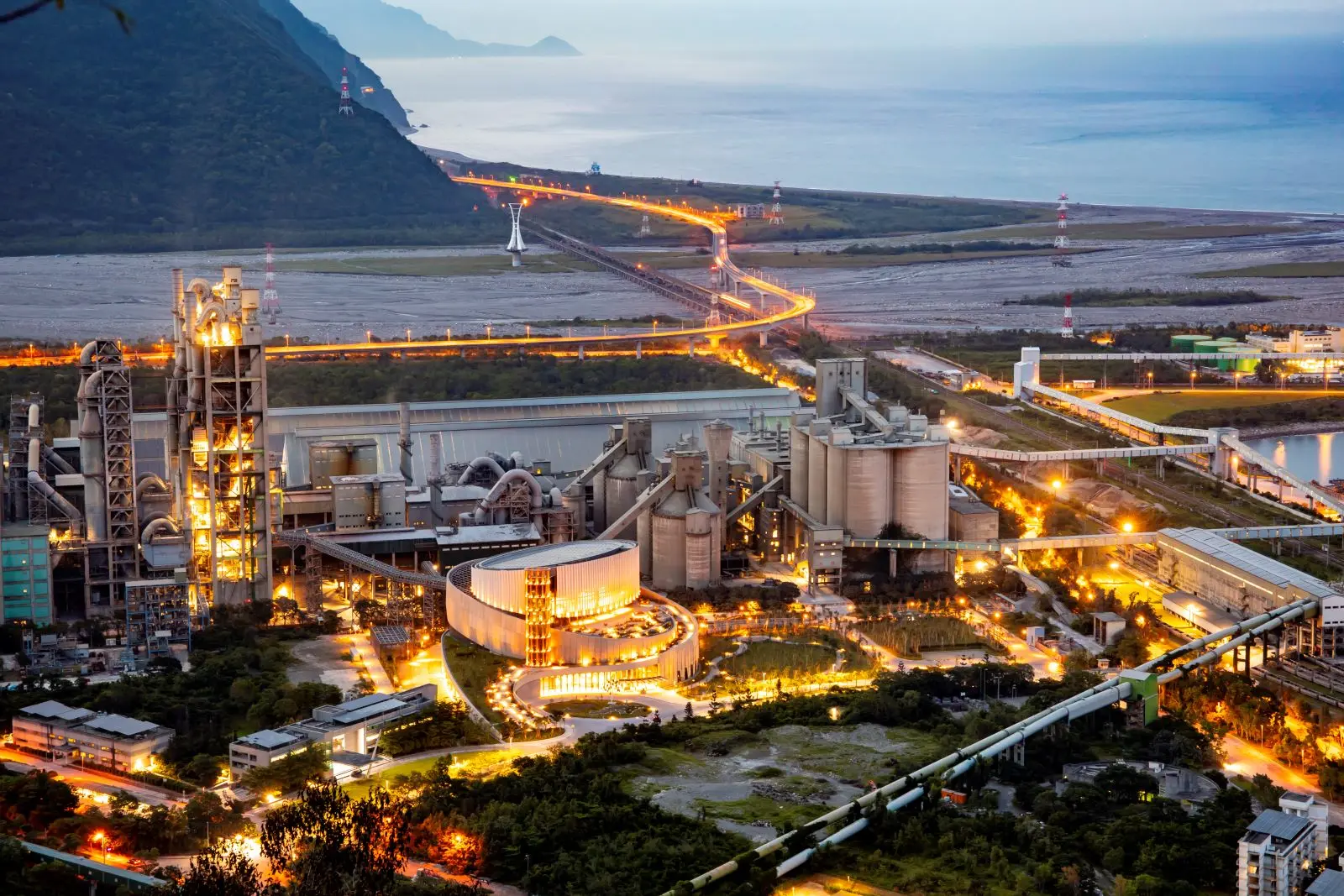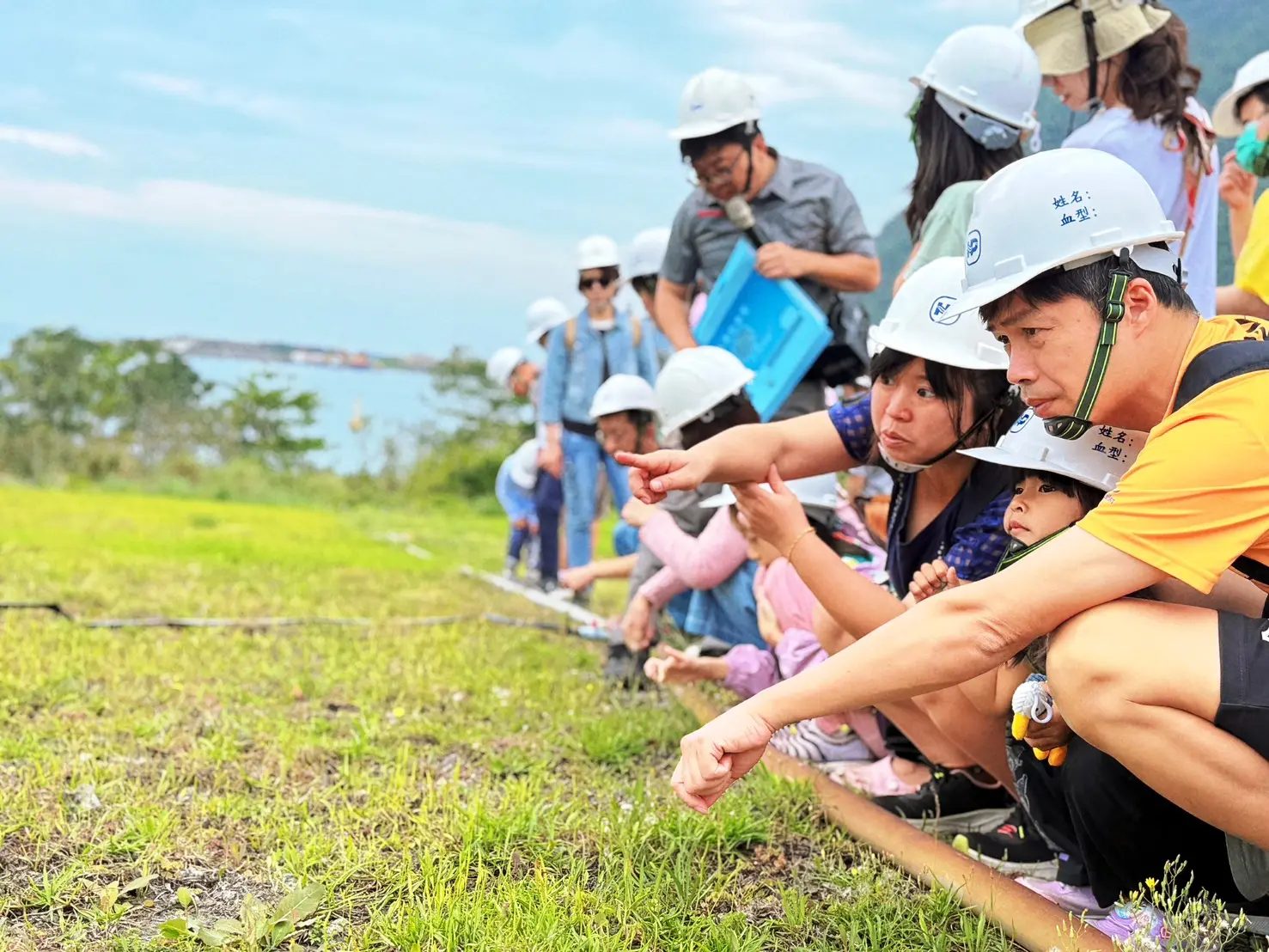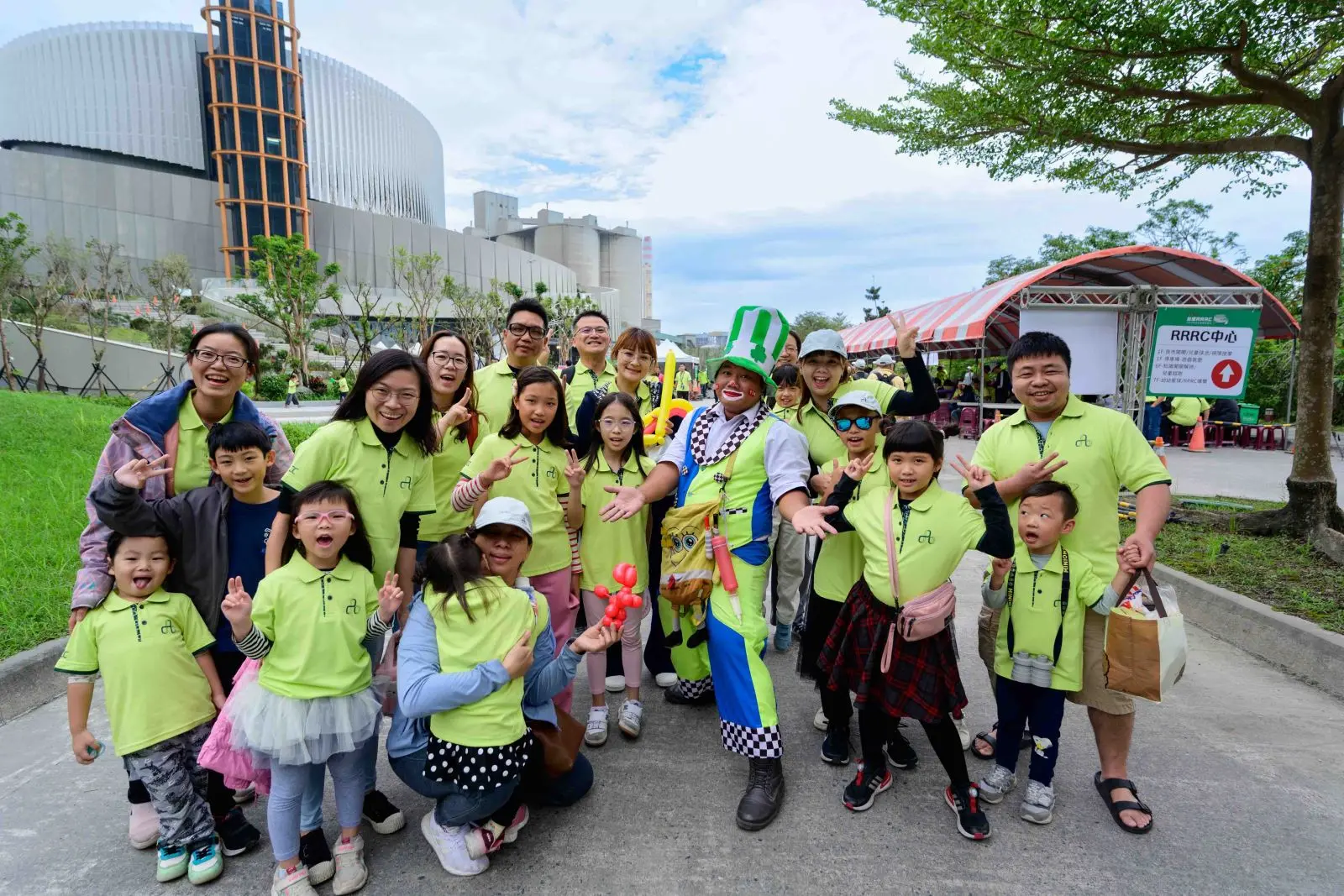Report on Subsequent Events
Report on Subsequent Events
Materiality Issues and Risk Management Mechanism of TCC Group Holdings
On July 14, 2025, a fire occurred at the Xiaogang plant of Molie Quantum Energy Corporation (MQE), a subsidiary of TCC Group Holdings' Battery Energy Business. This incident has led to a profound review of our transformation process, which began in 2018 with a focus on carbon reduction, green initiatives, and internationalization, and it is clear that "safety" is the fundamental cornerstone of sustainable development. The year 2024 marked the first year of TCC's internationalization, with its official English name changed to TCC Group Holdings. In 2025, the group further established nine major business groups: Cement and Environmental Protection (Europe-Africa, Asia), Cement and Energy Storage (Europe-Africa), Charging and Storage (Europe, Asia), Battery Energy, Asset Management, Energy for Social Transformation, and Investment Businesses. Our operations and project sites have expanded from Taiwan and Mainland China to 14 key markets, including Türkiye, Europe, West Africa, the United States, and Australia. As a substantial industrial holding company, TCC operates across a diverse range of industries, with varying markets, regulations, and supervisory mechanisms in each region. The recently updated internal control system provides subsidiaries with the flexibility to make adjustments based on their actual operational nature. While the internal control systems of these subsidiaries are being progressively improved, there is still room for enhancement. Furthermore, TCC is optimizing and deepening the rebalancing of its risk management system. We are developing ways to provide appropriate supervision, management, and effective authorization for subsidiaries in different markets and industries, allowing them to maintain operational flexibility while ensuring the implementation of the group's sustainable development and risk management. We are humbly reviewing and learning, while actively constructing a governance structure that aligns with an international industrial holding model.
Given that TCC conducts a materiality analysis for its sustainability report every two years, the assessment of material topics for 2023-2024 was completed in November 2023. The assessment for 2025-2026 was originally scheduled for November 2025. Simultaneously, TCC is following the International Sustainability Standards Board (ISSB) Sustainability and Climate Disclosure Standards (IFRS S1, S2) as outlined in the Financial Supervisory Commission's "Roadmap for Taiwan's Alignment with IFRS Sustainability Disclosure Standards." We are conducting industry risk identification for the 11 industries we are involved in, including construction materials, green energy, and resource recycling. A total of 18 potential risks have been identified across four major aspects: operational, environmental, social, and governance. Risk data collection is expected to be completed by the end of 2025 to serve as a basis for event review and subsequent reinforcement actions. This risk list has already addressed fire risk and was presented to the Board of Directors in August 2025.
List of TCC Group Holdings' IFRS S1 & S2 Sustainability and Climate-Related Risks | |||
A. Operational Aspect | B. Environmental Aspect | C. Social Aspect | D. Governance Aspect |
| A1 Inadequate Fire Risk Management A2 Inadequate Earthquake Risk Management | B1 Compliance costs for environmental regulations B2 Stricter Ecological Regulations for Environment, Biodiversity, and Development B3 Inadequate Full Life-cycle Management of Products or Services B4 Carbon Trading/Carbon Fees/Carbon Tax for Total Carbon Emissions Control B5 Failure in Research and Development Investment for Low-carbon and Negative Carbon Technologies B6 Ineffective Low-carbon Technology, Equipment, and Management B7 Lack of Water Resources B8 Increasing Frequency and Intensity of Extreme Precipitation Events | C1 Inadequate Occupational Health and Safety Management C2 Fines Related to Integrity and Ethics C3 Talent Shortage Due to Inadequate Employee Training and Development C4 Inadequate Stakeholder Communication and Management C5 Decreasing Support Intensity from Insurance and Financial Institutions for Investment and Financing | D1 Inadequate Information Security Management D2 Inadequate Sustainable Supply Chain Management D3 Insufficient Understanding of Green Energy /Energy Storage Installation Regulations |
Risk Governance Structure and Operational Mechanism
Improve Risk Management Authorization and Limits
Risk management is essential to corporate sustainability. TCC's risk governance is structured with three lines of defense. The Board of Directors serves as the highest decision-making body, with the Risk Management Committee operating under it. The committee is responsible for reviewing the implementation of five major risk management areas: strategic, operational, climate, financial, and other risks. It approves risk control priorities and risk levels to ensure that the risk management mechanism can adequately address the risks faced by the group and is integrated into daily operations. The Corporate Sustainable Development Committee is a cross-departmental functional group that conducts risk assessments and promotes ESG projects related to sustainability, climate, nature, and financial issues. Members of the Risk Management and Corporate Sustainable Development Committee are required to regularly identify and manage operational risks, and to propose improvement and monitoring plans to implement risk mitigation. They report a summary to the Risk Management Committee at least twice a year.
(For details, see the 2024 TCC Group Holdings Sustainability Report, CH 1.2 and 1.3)
Learning from the fire incident of MQE, TCC will re-evaluate and strengthen relevant risk appetite (risk tolerance) indicators and limits to ensure that the operational strategic direction is consistent with risk management. More forward-looking assessments and settings will be conducted for investments in new industries such as high-end lithium batteries. At the same time, by implementing standardization and quantification of risk appetite, a more precise measurement benchmark will be established to effectively supervise the risk assessment and decision-making of each business group under TCC Group Holdings, and to continuously improve the balance and rebalancing of risk management authorization. In addition, TCC will comprehensively enhance the management of all business groups and subsidiaries. Graded approval authorities will be set within the risk appetite and limits, complemented by regular reviews and reports from internal audit. For major cases, decision-making will be elevated to high-level meetings at the operational headquarters to ensure more rigorous and institutionalized risk governance, effectively reducing all potential loss risks and ensuring operational stability and resilience.
Related Policies of | Regulations | Management Mechanisms |
| Risk Management Policy Internal Control Policy | 1. Business Continuity Management Guidelines 2. Risk Mitigation Procedure Manual 3. Hazard Identification and Risk Assessment Management Procedure Manual 4. Environmental, Safety and Health (ESH) Handbook | (1) Emergency response and recovery plans are established for specific crisis events such as earthquakes, fires, floods, typhoons, power outages, water shortages, raw material shortages, strikes, large-scale epidemics, and other disruptions. Thematic drills are conducted annually to continuously improve response procedures and recovery strategies. |
Stakeholder Engagement Policy | ESH Communication Management Procedure Manual | (1) Risks from stakeholder engagement are assessed and identified, considering potential risks including reluctance to participate, fatigue from involvement, lack of notification to stakeholders, and conflicts among stakeholders. |
Occupational Safety and Health Policy Statement | 1. Hazard Identification and Risk Assessment Management Procedure Manual 2. Environmental, Safety and Health (ESH) Handbook | Hazard identification and risk assessment are conducted for routine/non-routine tasks. The severity and frequency of safety and health risks for each process and activity are evaluated, and mitigation measures are adopted considering regulations and existing control measures. |
Emergency Response | ||
Business Continuity Management Guidelines | 1. Business Continuity Management Regulations 2. Emergency Incident Response and Preparedness Procedure Manual | The unit where the disaster occurs forms an operational team, with the highest-ranking executive of the plant/subsidiary acting as the commander. The team initiates evacuation and performs initial disaster control within their capabilities. The Environmental Safety & Health (ESH) management unit, finance department, and designated executives assist the commander in carrying out necessary tasks within their authorized scope. Strengthen Internal Reporting SystemDepending on the scale, type, or duration of the disaster's impact, an emergency response center is established at the TCC operational headquarters. The TCC Group CEO serves as the Chief Commander, and the TCC President serves as the Deputy Commander. The Chief of Occupational Safety and Health Management (hazard assessment), CFO (damage and insurance claim assessment), CHRO (employee assistance program), CSO (unified external messaging and media liaison), relevant functional heads involved in the incident (support assistance, customer communication), and Legal Affairs and Compliance Manager (rights and contracts) all participate and activate cross-unit resource deployment. The president of the business group goes to the scene as the on-site coordinator, responsible for coordinating, communicating, and integrating resources and affairs between the plant/subsidiary and the TCC operational headquarters to ensure the smooth execution of decisions or actions. In addition to coordinating resources and actions, the coordinator must report to the TCC operational headquarters by phone, summarizing the event according to the "seven elements" (what, where, when, scale, impact, actions taken, support needed), maintaining two-way real-time communication, and confirming the time for the next report. Strengthen Community Notification and Communication |
Operational Recovery | ||
Business Continuity Management Guidelines | Emergency Incident Response and Preparedness Procedure Manual | (1) When the situation is resolved, an on-site environmental safety inspection is conducted. After confirming that there are no residual chemical leaks, hazardous structures, or fire sources, the commander announces the start of disaster recovery operations. |
Strengthening Risk Mitigation Measures
Enhancing Professional Firefighting Capabilities for Emerging Fire Threats
The fire incident of MQE has raised public concerns about extinguishing lithium battery fires, including the limited understanding of the battery industry by fire departments. TCC plans to expand its support for building up firefighting capacity. It will invest in firefighting resources to assist in purchasing equipment for new types of fires and will strengthen cooperation with fire departments to jointly establish operating procedures and precautions for responding to lithium battery fires. Joint drills will be conducted to help firefighters understand the characteristics of battery cells. For customers, a product use firefighting guide will be developed in the future, providing recommendations on a complete design from layout, suppression, ventilation, detection and alarm, drainage, emergency power-off to explosion-proof pressure relief.
To comprehensively strengthen the response and handling capabilities for fire risks at all plant sites, TCC has increased the frequency of firefighting response and evacuation drills at all locations, supplemented by scenario simulations such as electrical fires, to raise employee awareness of fire safety. New skills training has been added for members of the emergency response teams at each plant to ensure that they can quickly grasp the situation in an emergency. Given the different nature of firefighting in the energy industry, TCC has also hired external experts to prioritize the establishment of in-house firefighting teams for the energy business units. There are also plans to hire professionals with firefighting academic backgrounds to strengthen the company's own firefighting capabilities and to address the new types of fire risks arising from the energy transition. External experts will also conduct a comprehensive review of plant design and firefighting equipment configuration to evaluate future optimization directions.
Utilizing New Ultra-High Performance Concrete (UHPC) for Fire-Safe Construction Materials
The Xiaogang plant of Molie Quantum Energy Corporation (MQE) was constructed in 2021. The fire caused the plant's traditional firewalls to be breached. In 2023, TCC launched Ultra-High Performance Concrete (UHPC), which possesses high strength, fire resistance, and excellent weather resistance, and can maintain structural safety in extreme environments. This can comprehensively enhance the fire and explosion resistance of our plants in the future. In addition, for the plant's energy storage equipment, which has drawn attention, TCC and NHOA.TCC have jointly developed the EnergyArk energy storage cabinet, which is made of UHPC. Fire tests have shown that it can withstand continuous burning at 1,050°C for two hours. It is also designed with a complete water-filling fire extinguishing mechanism that can inject 9,000 liters of water within 5 minutes to completely submerge and extinguish the lithium battery system. This design has passed multiple international certifications. (see 2024 TCC Group Holdings Sustainability Report, p. 110) This design can effectively reduce the risk of chain disasters caused by thermal runaway of energy storage facilities, ensuring the stable and safe operation of the energy system. In September 2023, NHOA.TCC, the subsidiary of TCC Group Holdings, proactively communicated with the National Fire Agency to establish SOPs for industrial fire emergency response and conducted an energy storage system accident drill in cooperation with the fire department, which will serve as a basis for the future development of firefighting training materials.
Adopting the International RBA Framework | Third-Party Audit to Comprehensively Review the Energy Business
The Tainan plant plant of E-One Moli Energy Corporation and the Xiaogang plant of Molie Quantum Energy Corporation (MQE) initiated third-party human rights and environmental audits in May 2025, in accordance with the Responsible Business Alliance (RBA) Code of Conduct. This involves a health check across five major areas: labor, health and safety, environment, ethics, and supply chain management, to identify potential risks and opportunities for improvement. As of August, the document review and on-site inspections have been completed. The main audit findings include insufficient evacuation drills for night-shift employees, incomplete chemical control measures, and hazard identification that did not cover all relevant stakeholders. The relevant units at the operational headquarters will supervise the prompt correction of these deficiencies. Although operations at the the Xiaogang plant of MQE were suspended due to the fire in July, the Tainan plant plant of E-One Moli Energy Corporation is proceeding as scheduled, with the audit to be completed by an RBA-certified third-party organization by the end of the year. Based on this experience, TCC plans to expand the scope of implementation to include the Taiwan sites of the "Charging and Storage Business" and the "Battery Energy Business." Simultaneously, fire safety at project sites will be strengthened. Plant fire safety inspections will be completed in accordance with Taiwan's fire safety and occupational safety laws and the US National Fire Protection Association (NFPA) standards, and a third-party inspection report on factory disaster prevention and safety will be submitted. Building on the RBA audit experience, TCC plans to enhance its internal audit capacity. In addition to the annual audits by the existing audit office, a cross-departmental internal audit team will be formed in the second half of the year, composed of senior front-line staff from the plants, to comprehensively review the management practices of the energy business. Internal education and training will be conducted based on the latest version of the RBA Code of Conduct, combined with on-site practical simulations, to achieve accountable management.
Rebuilding Stakeholder Confidence | Strengthening In-depth Engagement from the Crisis
TCC is convinced that only with smooth and effective engagement with its stakeholders can TCC capture the pulses in the markets, economy, society, and environment, and ultimately put TCC's sustainability missions of "Nature First" and "Benefit to Society" into action. Although the fire incident did not cause major casualties, it did create anxiety among local residents and employees about the battery cell plant. This incident has also led TCC to deeply reflect that while pursuing industrial innovation, the foundation of communication and trust with local stakeholders needs to be strengthened. TCC views stakeholders as important partners on its transformation path and is taking engagement actions that are both broad and deep:
Establishing a Neighborhood Affairs Team for In-depth Dialogue and Communication
TCC is addressing this incident with a responsible and transparent attitude. A dedicated Neighborhood Affairs Team has been formed by high-level executives from the operational headquarters and senior management from E-One Moli Energy Corporation, and a director has been formally appointed. By visiting multiple elected representatives, village chiefs, and neighbors, we have initiated an in-depth dialogue with the community, carefully listening to the concerns of local residents regarding health, the environment, and industrial safety. We are rebuilding the communication between the community affairs unit and the neighborhood to ensure information transparency and to actively respond to community concerns. In the future, TCC will also establish transparent information channels, continue to consult community opinions, and enable residents to stay informed at all times.
Stakeholders | Purpose | Action |
| Local Communities · Surrounding residents · Village chiefs of Xiaogang District, Kaohsiung City · Elected representatives (legislators, city councilors) | To ensure smooth communication and information transparency, and to respond to the needs of local residents and reduce their concerns as much as possible. | 1. Regularly visit and contact all 38 village chiefs in Xiaogang District, Kaohsiung City, with increased communication frequency for the Xiaogang Village and neighboring villages, and continue to provide updates on post-disaster recovery progress and the fire investigation. 2. Proactively provide advance notice of the plant cleanup schedule. 3. Proactively provide environmental quality inspection reports. |
| Government & Competent Authorities · Kaohsiung Linhai Industrial Park Service Center, MOEA · Supervisor of Xiaogang District, Kaohsiung City · Environmental Protection Bureau, Kaohsiung City Government · Fire Department, Kaohsiung City Government | To maintain smooth communication and information transparency while ensuring compliance, and to cooperate with relevant units in conducting the fire investigation and post-disaster cleanup. | 1. Continue to provide updates on post-disaster recovery progress and the fire investigation. 2. Proactively provide advance notice of the plant cleanup schedule. 3. Proactively release monthly autonomous environmental quality inspection reports. · Proactively provide a weekly "Report on Important Activities and Matters" to the Kaohsiung Linhai Industrial Park Service Center, MOEA, explaining community communication, plant cleanup progress, and inspections by relevant units. 4. Actively carry out post-disaster cleanup work after applying for and receiving approval from the Kaohsiung City Government Environmental Protection Bureau. 5. Cooperate with the Fire Investigation Division of the Kaohsiung City Government Fire Department to excavate the site for investigation after experts have confirmed that the core disaster area is safe. |
Employees | To ensure their physical and mental needs are supported and addressed. | 1. Full salaries are being paid during the work suspension. 2. Interest-free emergency loans are being provided, with a cumulative maximum of NT$600,000, to help colleagues alleviate financial pressure. 3. An Employee Assistance Program (EAP) has been launched in cooperation with an external third-party counseling firm to provide free professional psychological support resources. 4. Continue to care for colleagues remaining at the plant and respond to their needs. 5. Both the TCC Group and the Xiaogang plant have held Town Hall Meetings to explain future plans to all colleagues and how to face more challenges together. |
Proactive Disclosure of Environmental Quality and Related Information, with Regular Disclosure of Inspection Reports on the Molicel Official Website.
(1) Autonomous Third-Party Inspection Commissioned from August to December
• Water Quality (Monthly): 28 test items include water temperature, pH, BOD, COD, SS, true color, free effective residual chlorine, oil and grease, nitrate nitrogen, fluoride, anionic surfactants, total chromium, cadmium, nickel, copper, lead, zinc, total mercury, arsenic, phenols, hexavalent chromium, dissolved iron, dissolved manganese, boron, tin, molybdenum, cobalt, and barium.
• Air Pollution (Monthly): Includes AQI, PM2.5 (µg/Nm³), PM10 (µg/Nm³), CO (ppm), SO₂ (ppb), NO₂ (ppb), and O₃ (ppb).
• Hydrofluoric Acid (Monthly): Conducted using the perimeter monitoring method.
• Waste: Regular updates on the progress of post-disaster plant cleanup, including the status of approval letters from the city's Environmental Protection Bureau and the plant cleanup schedule.
(2) Government Open Information
• Kaohsiung Linhai Industrial Park Service Center, MOEA: Air quality testing and dioxin testing.
• Air Quality Website, MOENV: Real-time air quality monitoring results.Deepening Community Relations
TCC Group continues to recruit local talent, cooperate with the local supply chain, and organize and actively participate in local activities to respond to the expectations of local residents. We hope to use the experience of this incident to foster a closer partnership with the community.








